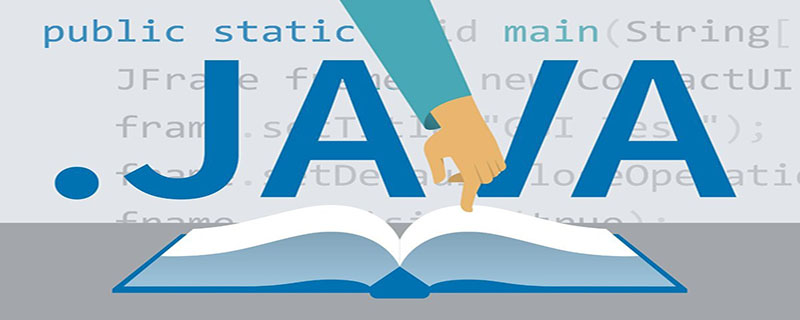Home >Java >javaTutorial >Three ways to handle Spring MVC exceptions uniformly
Three ways to handle Spring MVC exceptions uniformly
- (*-*)浩forward
- 2019-08-29 16:22:013803browse
Spring has three methods of unified exception handling, namely:
Use @ExceptionHandler annotation, implement HandlerExceptionResolver interface, and use @controlleradvice annotation

Use @ExceptionHandler annotation
One disadvantage of using this annotation is that the method for exception handling must be in the same Controller as the method that caused the error. Use as follows:
@Controller
public class GlobalController {
/**
* 用于处理异常的
* @return
*/
@ExceptionHandler({MyException.class})
public String exception(MyException e) {
System.out.println(e.getMessage());
e.printStackTrace();
return "exception";
}
@RequestMapping("test")
public void test() {
throw new MyException("出错了!");
}
}As you can see, the biggest flaw of this method is that it cannot globally control exceptions. Each class must be written once.
Implement the HandlerExceptionResolver interface
This method allows global exception control. For example:
@Component
public class ExceptionTest implements HandlerExceptionResolver{
/**
* TODO 简单描述该方法的实现功能(可选).
* @see org.springframework.web.servlet.HandlerExceptionResolver#resolveException(javax.servlet.http.HttpServletRequest, javax.servlet.http.HttpServletResponse, java.lang.Object, java.lang.Exception)
*/
public ModelAndView resolveException(HttpServletRequest request, HttpServletResponse response, Object handler,
Exception ex) {
System.out.println("This is exception handler method!");
return null;
}
}Use @ControllerAdvice @ExceptionHandler annotation
As mentioned above @ExceptionHandler, the method that requires exception handling must be in the same Controller as the method that caused the error. Then when the code adds @ControllerAdvice, it does not need to be in the same controller. This is also a new feature brought by Spring 3.2. As can be seen from the name, it generally means controller enhancement. In other words, @controlleradvice @ExceptionHandler can also implement global exception catching.
Please ensure that this WebExceptionHandle class can be scanned and loaded into the Spring container.
@ControllerAdvice
@ResponseBody
public class WebExceptionHandle {
private static Logger logger = LoggerFactory.getLogger(WebExceptionHandle.class);
/**
* 400 - Bad Request
*/
@ResponseStatus(HttpStatus.BAD_REQUEST)
@ExceptionHandler(HttpMessageNotReadableException.class)
public ServiceResponse handleHttpMessageNotReadableException(HttpMessageNotReadableException e) {
logger.error("参数解析失败", e);
return ServiceResponseHandle.failed("could_not_read_json");
}
/**
* 405 - Method Not Allowed
*/
@ResponseStatus(HttpStatus.METHOD_NOT_ALLOWED)
@ExceptionHandler(HttpRequestMethodNotSupportedException.class)
public ServiceResponse handleHttpRequestMethodNotSupportedException(HttpRequestMethodNotSupportedException e) {
logger.error("不支持当前请求方法", e);
return ServiceResponseHandle.failed("request_method_not_supported");
}
/**
* 415 - Unsupported Media Type
*/
@ResponseStatus(HttpStatus.UNSUPPORTED_MEDIA_TYPE)
@ExceptionHandler(HttpMediaTypeNotSupportedException.class)
public ServiceResponse handleHttpMediaTypeNotSupportedException(Exception e) {
logger.error("不支持当前媒体类型", e);
return ServiceResponseHandle.failed("content_type_not_supported");
}
/**
* 500 - Internal Server Error
*/
@ResponseStatus(HttpStatus.INTERNAL_SERVER_ERROR)
@ExceptionHandler(Exception.class)
public ServiceResponse handleException(Exception e) {
if (e instanceof BusinessException){
return ServiceResponseHandle.failed("BUSINESS_ERROR", e.getMessage());
}
logger.error("服务运行异常", e);
e.printStackTrace();
return ServiceResponseHandle.failed("server_error");
}
}If the exception type to be handled is not declared in the @ExceptionHandler annotation, it defaults to the exception type in the parameter list. So it can also be written like this:
@ControllerAdvice
public class GlobalExceptionHandler {
@ExceptionHandler()
@ResponseBody
String handleException(Exception e){
return "Exception Deal! " + e.getMessage();
}
}The parameter object is the exception object thrown by the Controller layer!
Inherit the ResponseEntityExceptionHandler class to implement global exception capture for the Rest interface, and can return a custom format:
@Slf4j
@ControllerAdvice
public class ExceptionHandlerBean extends ResponseEntityExceptionHandler {
/**
* 数据找不到异常
* @param ex
* @param request
* @return
* @throws IOException
*/
@ExceptionHandler({DataNotFoundException.class})
public ResponseEntity<Object> handleDataNotFoundException(RuntimeException ex, WebRequest request) throws IOException {
return getResponseEntity(ex,request,ReturnStatusCode.DataNotFoundException);
}
/**
* 根据各种异常构建 ResponseEntity 实体. 服务于以上各种异常
* @param ex
* @param request
* @param specificException
* @return
*/
private ResponseEntity<Object> getResponseEntity(RuntimeException ex, WebRequest request, ReturnStatusCode specificException) {
ReturnTemplate returnTemplate = new ReturnTemplate();
returnTemplate.setStatusCode(specificException);
returnTemplate.setErrorMsg(ex.getMessage());
return handleExceptionInternal(ex, returnTemplate,
new HttpHeaders(), HttpStatus.OK, request);
}
}The above is the detailed content of Three ways to handle Spring MVC exceptions uniformly. For more information, please follow other related articles on the PHP Chinese website!

